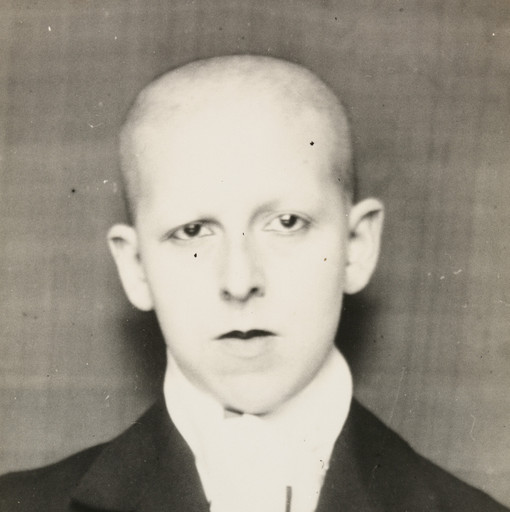Alec Soth (born 1969) is an American photographer, based in Minneapolis. Soth makes “large-scale American projects” featuring the midwestern United States. New York Times art critic Hilarie M. Sheets wrote that he has made a “photographic career out of finding chemistry with strangers” and photographs “loners and dreamers”. His work tends to focus on the “off-beat, hauntingly banal images of modern America” according to The Guardian art critic Hannah Booth.

hen he photographs people, Soth feels nervous at times. He said: “My own awkwardness comforts people, I think. It’s part of the exchange.” When he was on the road, he’d have notes describing types of pictures he wanted taped to the steering wheel of his car. One list was: “beards, birdwatchers, mushroom hunters, men’s retreats, after the rain, figures from behind, suitcases, tall people (especially skinny), targets, tents, treehouses and tree lines. With people, he’ll ask their permission to photograph them, and often wait for them to get comfortable; he sometimes uses an 8×10 camera. He tries to find a “narrative arc and true storytelling” and pictures in which each picture will lead to the next one.









Soth has been photographing different parts of the US since his first book, Sleeping by the Mississippi, was published in 2004. His second book, Niagara, was published in 2006. One of his photos is of a woman in a bridal gown sitting outside what appears to be a motel; he describes having made an arrangement with a particular wedding chapel in Niagara Falls which let him take pictures of couples getting married, by photographing them after their weddings.

Link to my project: Throughout my future project, I would like to include some portraits of myself and my dad, brother and mum. I think that deciding to attempt to take images in Alec Soth’s style will make successful and creative outcomes and I can link them to other image that will be in my project, as I would also like to include old family photos. Considering the layout of my final photobook I would like to place photographs that have been inspired by Soth next to old family images that have been found in albums, this will be to show the affect time and environment has had on my family.
Sleeping By The Mississippi
Much has been written about Alec Soth’s Sleeping by the Mississippi. First published in 2004, it is a landmark publication in the Magnum photographer’s career, which propelled him to international recognition and notoriety. First editions of the photobook are highly prized items today. At a talk in London in 2017, in conversation with Sean O’Hagan, Soth reflected on the work, almost 15 years on, and how he began to make what would eventually become the tightly-edited tome, Sleeping By the Mississippi.


“I was a morose, introverted young man,” says Soth of his early years, identifying with a version of a Midwestern American sensibility that was “dark and lonely”. Working in a photo-processing lab on other people’s pictures throughout his early 20s, he had (almost) given up the ambition to become a famous artist, yet it was this very relaxation of his personal ambition that eventually allowed him the degree of freedom necessary to accept the influence of the American tradition of road trip photography in his own work – to stop pretending he was reinventing the wheel, to carry on the tradition and make it his own. More detailed images of this book can be found: Alec Soth | Sleeping by the Mississippi.

He began to follow the Mississippi River in his car, driving from place to place, letting himself progress towards locations he had vaguely researched and “using the river as a route to connect with people along the way.” These were the early days of the web and the development of his process ran parallel to the growth of the internet. “It was like web surfing in the real world” he says, “it was like trying to ride a wave.”









“A miraculous time in my life,” is how Soth describes this process. He felt warmly welcomed in the region; he was allowed into the intimacy of people’s homes. Hyper-alive to the world, Soth had in fact just spent an intense month-long period with his mother-in-law, who had become very ill. He lived with her in her house as she died.

Image Analysis: In my opinion, this is one of Soth’s most successful images of all time, this is because of the clarity and message behind the image. I like the feeling of isolation within this image, as it makes the viewer focus on all different parts of the image within time, the fact this image has a sense of quietness means that all different aspects/ areas of it can be appreciated and analysed. Along with this, the coolest tones within the image mean that there is a sense of loneliness and isolation, and this is added to by the fact that there is no people or animals in this image. I really like how the focus of the image is on the gas station itself and how the brighter lights contrast with the title of the book. The lightness contradicts with the word “sleeping”, as they are not associated with each other, this creates contrast of the narrative of the book itself, and comes away from the original concept of the book.










































































































